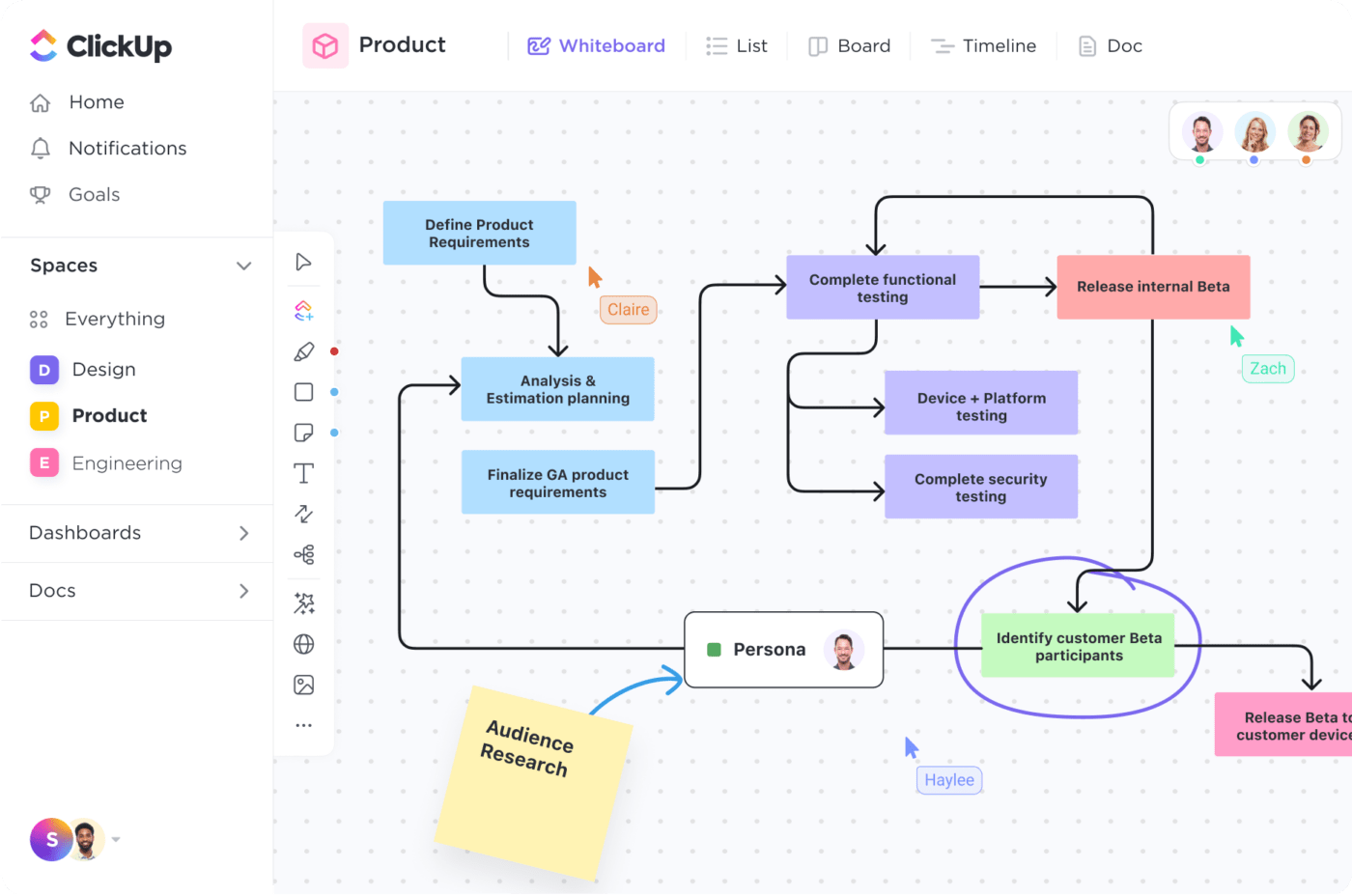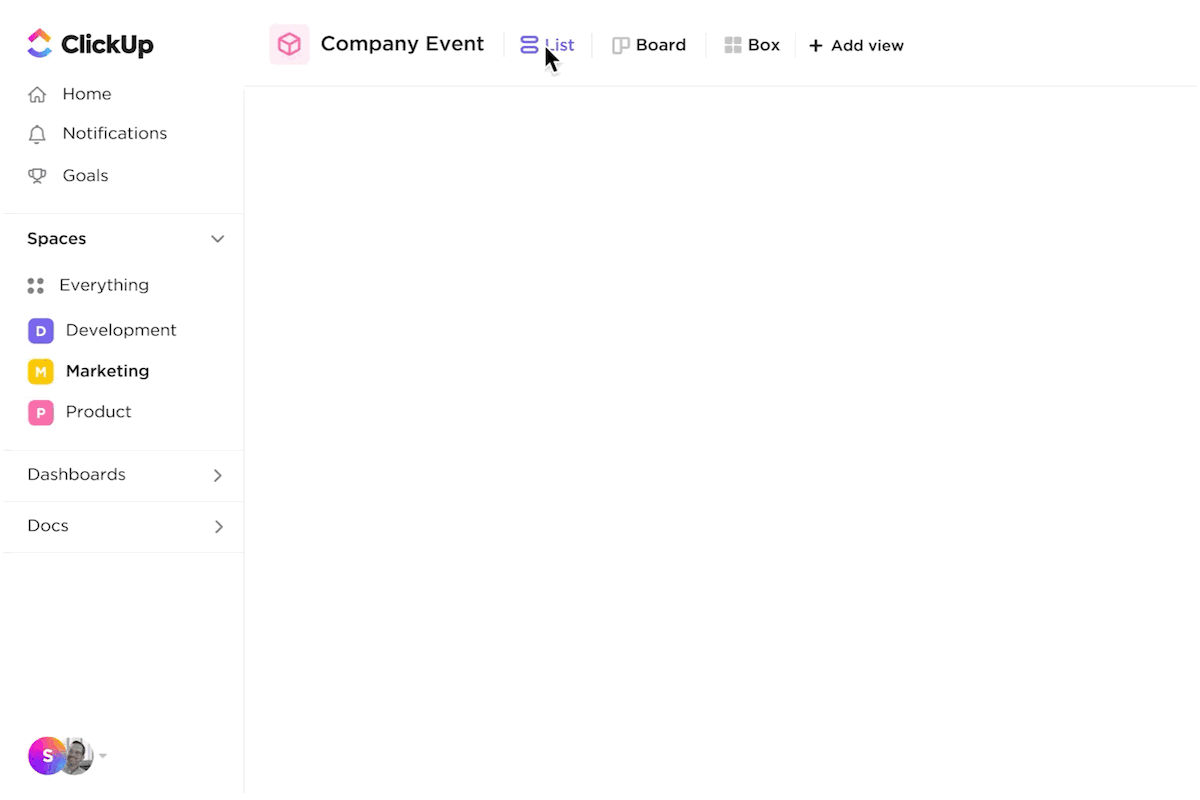المخاطر أمر حتمي في الأعمال التجارية. فمن التجار الذين يرتادون البحار في الماضي لحماية بضائعهم من القراصنة إلى الشركات الحديثة التي تحارب مجرمي الإنترنت، تُعد استراتيجيات التخفيف من المخاطر أساسية لأي عمل تجاري.
يمكن أن تكون تكاليف الفرصة البديلة لعدم وجود استراتيجية لتخفيف المخاطر مرتفعة للغاية. KMPG تقديرات أن الشركات الكبيرة تخسر 1.5% من أرباحها بسبب سوء استراتيجيات إدارة المخاطر.
يجب أن يكون لدى المؤسسات استراتيجية مدروسة ومستقبلية لتخفيف المخاطر لمنع خسارة الأرباح والسمعة والامتثال. في منشور المدونة هذا، نناقش لماذا وكيف.
ما هي المخاطر؟
المخاطر هي حالة عدم اليقين أو عدم القدرة على التنبؤ المرتبطة بإدارة الأعمال التجارية، والتي يمكن أن تؤدي إلى خسارة من نوع ما. لا يجب أن تكون الخسارة نفسها نقدية فقط. يمكن أن تأتي في أشكال مختلفة، مثل:
المخاطر المالية: تواجه المؤسسات مخاطر مالية عندما تكون معرضة لخسارة الأموال إذا تحققت. وقد يكون ذلك خسارة المبيعات المحتملة، أو غرامات/عقوبات من السلطات، أو خسارة الأعمال التجارية لصالح المنافسين، وما إلى ذلك.
المخاطر القانونية أو مخاطر الامتثال: يمكن أن تكون المخاطر الناشئة عن عدم الامتثال للمعايير التنظيمية عالية جداً. مثل هذه المخاطر تعرض الشركات للدعاوى القضائية أو الغرامات النظامية.
المخاطر التشغيلية: عندما لا يعمل الشيء الذي يجب أن يعمل بسلاسة، فإن ذلك يخلق مخاطر تشغيلية. قد يكون ذلك عبارة عن تعطل إحدى الآلات الهامة أو تعطل البيئة السحابية. كما يمكن أن يعطل التعاون في مكان العمل مما يعيق التنفيذ الفعال للمشروع.
المخاطر الأمنية: إن أمن الأشخاص والمكان والأصول والمنتجات في المؤسسة أمر بالغ الأهمية. يمكن أن تأتي التهديدات من كارثة طبيعية أو مهاجم غير متوقع أو مخترق.
مخاطر تشويه السمعة: عندما يمكن أن تتأثر سمعة الشركة بتصرفات شخص ما، فإن ذلك يخلق خطرًا. على سبيل المثال، يمكن أن تؤثر حملة إعلانية عنصرية (عن غير قصد) أو سلوك غير مهذب لأحد الموظفين على سمعة الشركة.
ما هو تخفيف المخاطر؟
التخفيف من المخاطر هو عملية استراتيجية لتحديد التهديدات المحتملة التي يمكن أن تؤثر سلبًا على المؤسسة والسيطرة عليها والقضاء عليها. وهي جزء لا يتجزأ من استراتيجية الأعمال لتعزيز مرونتها واستجابتها. إليك ما يجب أن تبدو عليه العملية الجيدة لتخفيف المخاطر.
تحديد
كن محققاً واكتشف المخاطر المحتملة، سواء كانت مالية أو تشغيلية أو لوجستية. للقيام بذلك، قم بإعداد الأنظمة. على سبيل المثال، يمكن تحديد المخاطر التشغيلية المتعلقة بالتكنولوجيا من خلال المراقبة المستمرة والتقييم المنتظم لنقاط الضعف واختبار الاختراق (VAPT).
المعدل
بمجرد تحديد التهديدات، قم بإجراء تقييم شامل للمخاطر وحدد أولويات الاستجابة. يمكنك القيام بذلك من خلال الإجابة على سؤالين مهمين:
- الاحتمالية: ما مدى احتمال تحقق هذا الخطر؟
- التأثير: إلى أي مدى سيؤثر هذا الخطر على العمل في حال حدوثه؟
قم بتقييم كل خطر محدد بناءً على درجة خطورته وصمم خطة العمل. اختر من بين نماذج تقييم المخاطر الخاصة بـ ClickUp للبدء. أو ابدأ بنفسك.

قلل من مخاطر السلامة باستخدام قالب تحليل السلامة الوظيفية من ClickUp
على سبيل المثال، قد تكون الثغرة في قاعدة بيانات عملائك (التي تنطوي على مخاطر مالية ومخاطر تتعلق بالسمعة والامتثال) أولوية أعلى بكثير من الخطأ المطبعي في منشور على وسائل التواصل الاجتماعي (الذي ينطوي على مخاطر تتعلق بالسمعة). حدد أولوياتها وفقاً لذلك وحدد الجداول الزمنية.
التخفيف
استناداً إلى الأولويات، تعامل مع المخاطر، وواجهها مباشرةً. قم بإنشاء خطة لتخفيف المخاطر (والتي نناقشها بالتفصيل لاحقًا في منشور المدونة هذا).
مراقبة
لا تختفي المخاطر بمجرد تحديدها والتخفيف من حدتها. تواجه الشركات مخاطر جديدة من جميع الاتجاهات كل يوم. لذا، راقب المخاطر باستمرار وفعالية خطتك لتخفيف المخاطر. راجع العملية مرة كل 3-6 أشهر مع جميع أصحاب المصلحة.
قد تفكر، "ولكنني لستُ شركة بارزة ذات موارد ضخمة. هل كل هذا ضروري حقًا؟ حسنًا، نعم!
لماذا يعتبر تخفيف المخاطر مهمًا؟
بصرف النظر عن حجم الشركة أو موقعها أو منتجاتها أو إيراداتها، فإن الاستراتيجية الجيدة لتخفيف المخاطر تحمي المؤسسة وتحمي مصالحها.
يمكن للاستراتيجية جيدة التنفيذ أن تخفف من المخاطر من خلال
- تمكين تحديد المخاطر وتقييمها وإدارتها بشكل استباقي
- التنبؤ بالمخاطر المستقبلية وتسهيل الإجراءات الوقائية
- منع الخسائر المالية التي يمكن تجنبها
- تفادي تدافع الموارد والاستجابات عند تحقق التهديد
- توفير التكلفة الإضافية لإدارة المخاطر والتدابير التصحيحية
- إتاحة المجال للتجريب والابتكار
- زيادة مرونة الأعمال وقيمة المساهمين
للتخفيف من المخاطر بفعالية، أنت بحاجة إلى خطة. دعنا نرى كيف يمكنك بناء ذلك.
ما هي خطة تخفيف المخاطر؟
خطة تخفيف المخاطر هي إطار عمل شامل يساعدك على التعامل مع جميع أنواع المخاطر المحتملة. إنها مثل المظلة الموثوق بها في يوم ممطر، مما يسمح لك بالرقص تحت المطر مع البقاء جافاً!
وهي تتألف عادةً مما يلي.
نهج شامل لإدارة المخاطر: ما هو تعريفك للمخاطر؟ هل ستكون وقائية أم تفاعلية؟ هل ستكون استجاباتك هجومية أم دفاعية؟ كيف ستستوعب تأثير المخاطر؟
المخاطر المحددة: ضع قائمة بالمخاطر التي تتوقع أن تواجهها. اجعلها محددة وعملية. بدلاً من إدراج "تغيير في اللوائح التنظيمية"، حدد ذلك على النحو التالي: "من المتوقع أن يدخل قانون المرونة التشغيلية الرقمية حيز التنفيذ في عام 2024"
استراتيجية تخفيف المخاطر: حدد بوضوح كيف ستعالج كل المخاطر المحتملة. يمكن أن يساعد سير العمل المرئي للتخفيف من المخاطر في إشراك الفريق بأكمله في العملية. كما أنه سيساعدهم على تذكر الخطوات أو الوصول بسهولة إلى سير العمل إذا احتاجوا إليه.
قم بتضمين ما ستفعله لمنع حدوث الخطر وكيف ستستجيب له في حالة حدوثه.

ClickUp Whiteboard لتصور عملية التخفيف من المخاطر، مع تعليقات/ملاحظات لكل خطوة
إجراءات قابلة للتنفيذ: تحديد إجراءات محددة لتنفيذ استراتيجية التخفيف من المخاطر.
- تعيين المسؤوليات لأعضاء الفريق
- تخصيص ميزانيات للتخفيف من المخاطر المحددة
- تحديد الجداول الزمنية لكل بند من بنود الإجراءات
المراقبة والمراجعة: قم بصياغة عملية مراجعة منتظمة (مرة كل ثلاثة أشهر على الأقل) لتقييم مدى نجاح خطة التخفيف من المخاطر. قياس الفعالية استناداً إلى مقاييس محددة مسبقاً، مثل الوفورات في التكاليف ورضا العملاء، إلخ.
والآن بعد أن فهمت المفهوم، دعنا نستكشف الطرق العملية لوضع استراتيجية التخفيف من المخاطر.
10 استراتيجيات لتخفيف المخاطر في عملك التجاري
1. قبول المخاطر الحتمية
لا يلزم القضاء على جميع المخاطر أو حتى التخفيف من حدتها. في بعض الأحيان، قد يكون احتمال حدوث الخطر منخفضًا جدًا. أو قد تكون تكلفة التخفيف من المخاطر أعلى من تأثيرها. في مثل هذه الحالات، عليك أن تعترف بوجودها وتتركها كما هي، وهي استراتيجية تسمى قبول المخاطر.
وأبسط مثال على ذلك هو خطر مغادرة أحد أعضاء الفريق للمؤسسة. في معظم الحالات، هذا أمر لا مفر منه، لذلك يتم قبول الخطر. وعندما يحدث ذلك، يجب إعادة ملء الوظيفة.
2. نقل المخاطر إلى طرف ثالث
كما يوحي الاسم، تنقل هذه الاستراتيجية المخاطر منك إلى كيان آخر. والمثال الكلاسيكي على ذلك هو شراء تأمين ضد السرقة أو التأمين ضد الحريق لشركتك. في إدارة المشاريع، قد يكون هذا هو وجود موارد على مقاعد البدلاء أو الاحتفاظ بالمقاولين على القوائم.
تتبع المؤسسات نقل المخاطر كاستراتيجية عندما يكون تأثير تحققها عالياً. أثناء تنفيذ هذه الاستراتيجية، انتبه إلى أن التكاليف قد تكون مرتفعة أيضاً. على سبيل المثال، التأمين هو عبارة عن مدفوعات منتظمة، سواء تحقق الخطر أم لا.
3. تجنب المواقف المحفوفة بالمخاطر تماماً
في الطرف الآخر من استراتيجيات إدارة المخاطر هو تجنب المخاطر. وهنا يتم الابتعاد عن المشاريع/الأنشطة التي تنطوي على المخاطر المذكورة. يتم استخدام هذه الاستراتيجية في الحالات التي يكون فيها تأثير المخاطر مرتفعًا بشكل استثنائي.
ومن الأمثلة الواضحة على ذلك الامتناع عن توظيف مرشح لديه سجل إجرامي أو إنشاء مكتب في بلد يمر باضطرابات سياسية. وفي كل حالة من هذه الحالات تكون تكلفة الفشل باهظة للغاية بحيث لا يمكن المخاطرة.
4. تقاسم المخاطر على أساس التسامح التنظيمي
هنا، تقوم بتوزيع المخاطر على عدة أطراف. على سبيل المثال، تستثمر شركة رأس المال الاستثماري جزءًا من الاستثمار الذي تسعى إليه شركة ناشئة بدلاً من المبلغ بالكامل. وتقرر الشركة مقدار الاستثمار بناءً على مدى تحملها للمخاطر، أي الاستثمار الذي يمكن أن تخسره بشكل مريح.
عندما يقرر كل مستثمر استثماره بهذه الطريقة، يتم تقاسم المخاطرة فيما بينهم، مما يؤدي إلى كسر السقوط في حالة حدوثه.
5. إدارة المخاطر بشكل استراتيجي
إدارة المخاطر، والمعروفة أيضًا باسم التخزين الاحتياطي للمخاطر، هي أن يكون لديك احتياطي لكل ما تحتاجه (الأشخاص، والوقت، والسلع) لأوقات الأزمات. إذا كان هذا يجلب إلى ذهنك الاستعداد ليوم القيامة، فلا داعي لأن يكون الأمر متطرفًا إلى هذا الحد.
تحتفظ الشركات بانتظام بأنظمة التعافي من الكوارث أو النسخ الاحتياطية للبيانات في حالة تعطل شيء ما. كما أن الاحتفاظ بتدفق نقدي سليم يغطي الرواتب للأشهر القليلة القادمة هو أيضًا مثال مثالي.
مصممة لغرض معين برنامج إدارة المخاطر يمكن أن يساعد في وضع خطة العمل الصحيحة لكل نوع من أنواع المخاطر التي قد تواجهها الشركة.
6. التنويع للحماية من المخاطر
عملاً بالمثل القائل: لا تضع كل بيضك في سلة واحدة؛ فالتنويع يوزع المخاطر أو الاعتماد على خيارات متعددة، مما يقلل من التعرض للمخاطر والعواقب. وهي استراتيجية شائعة الاستخدام لتخفيف المخاطر.
تستعين المؤسسات بانتظام بمقاولين متعددين للقيام بوظائف متشابهة لتنويع مخاطر توقف أي منهم عن العمل. يقوم أصحاب رؤوس الأموال الاستثمارية بتنويع استثماراتهم عبر مختلف الشركات الناشئة. ويعمل الاستشاريون والمتعاقدون المستقلون مع عملاء متعددين في حال تقليص حجم أحد المتعاقدين أو إنهاء العقد.
7. اعتماد نهج رشيق
تعتبر ممارسة نهج أجايل في حد ذاتها استراتيجية فعالة للتخفيف من المخاطر. فالطريقة التقليدية كانت تتمثل في إنفاق سنوات وملايين الدولارات لبناء منتج ما قبل طرحه في السوق، وهو ما يشكل خطرًا كبيرًا للفشل.
من ناحية أخرى، تقوم فرق أجايل بإطلاق الحد الأدنى من المنتج القابل للتطبيق (MVP) والبناء التدريجي، مع مراعاة استجابة السوق بانتظام. وهذا يزيد من فرص النجاح لأنه مبني على ملاحظات العملاء وأداء المنتج. بينما تقوم فرق تقنية أخرى بإطلاق إصدارات تجريبية للمطورين ثم للجمهور قبل الإطلاق الكامل.
8. استخدام برنامج إدارة المهام
تعتمد استراتيجية إدارة المخاطر هذه على الأدوات والعمليات للقضاء على المخاطر التشغيلية. يمكن أن تساعد برمجيات إدارة المهام الجيدة في تنظيم جميع الأعمال بطريقة هرمية ومترابطة وسياقية، مما يحسن الكفاءة التشغيلية داخل الفريق.

نظّم عملك وقم بإدارة المشاريع وأتمتة المهام المتكررة باستخدام ClickUp برنامج ClickUp لإدارة المهام لتحقيق ذلك بالضبط. باستخدام ClickUp، يمكنك:
- تنظيم المهام والمهام الفرعية في مشاريع، مما يساعدك على إدارة مشاريع متعددة بفعالية
- تحديد أولويات العمل بناءً على العوامل ذات الصلة بالعمل
- تعيين مستخدمين لكل مهمة، مما يضمن المساءلة
- إضافة الأولويات والعلامات والتبعيات إلى المهام
- توفير رؤية كاملة لكل أصحاب المصلحة
- تتبع الوقت المستغرق لكل مهمة لضمان الإنتاجية والربحية
![]()
تتبع الوقت المدمج في تتبع الوقت لجميع المهام على ClickUp
توفر أداة إدارة المشروع مثل ClickUp الوضوح لجميع الأطراف المعنية. فهي تقضي على مخاطر سوء الفهم أو عدم الالتزام بالجداول الزمنية أو تكبد تكاليف إضافية. فهي تجمع بين جميع الموارد، مما يلغي الحاجة إلى اجتماعات لا نهاية لها ومخاطر الوقت غير المنتج. 🙌
9. مراقبة تقدم المشروع
تتعرض لمخاطر استراتيجية وتشغيلية ومالية إذا لم يتقدم المشروع على النحو المنشود. ويمكن لآلية قوية لرصد المخاطر أن تخفف من حدة ذلك.
يمكن أن تساعد المراقبة المنتظمة:
- تتبع ما إذا كان المشروع في الوقت المحدد
- وضع أهداف واضحة للمشروع
- تحديد الثغرات أو المشكلات في حالة التأخير
- إجراء تعديلات مثل تعيين موارد إضافية أو دفع المواعيد النهائية
- التعاون مع أعضاء الفريق حول أدائهم والتعديلات المطلوبة

إنشاء مشروع لمراقبة تقدم مشروعك والتحكم فيه باستخدام هذا القالب قالب خطة مراقبة المشروع والتحكم فيه في ClickUp يساعد المديرين على ضمان إنجاز المشاريع في الوقت المحدد، وفي حدود الميزانية، وبالجودة المتوقعة.
يمكن أن يحميك ClickUp من الكثير من المخاطر التشغيلية. إن لوحة معلومات ClickUp تتبع المشروع في الوقت الفعلي. تتيح لك طريقة عرض عبء العمل فهم من يقوم بعمل ما وتعيين المهام بشكل مناسب. كما أن عرض مخطط جانت تصور الجدول الزمني للمساعدة في التسليم في الوقت المحدد.

عرض مخطط جانت في ClickUp لمراقبة الجداول الزمنية للمشروع
يمكنك إدارة الأهداف والميزانيات في مكان واحد. يمكنك أيضًا استخدامه كـ تطبيق تعاون لتسهيل التواصل الهادف وفي الوقت المناسب وفي السياق المناسب بين أعضاء الفريق.
10. وضع أهداف قابلة للتحقيق
يبدأ التخفيف من مخاطر الفشل بإعداد نفسك للنجاح. وضع أهداف قابلة للتحقيق أمر أساسي لتحقيق ذلك. اجمع فريقك معًا وحدد أهدافًا يعتقد الجميع أنها قابلة للتحقيق. اجعلها مرئية للجميع في الفريق - يمكنك استخدام العديد من تطبيقات تتبع الأهداف لهذا الغرض.
قم بتضمين الوقت والجهد الاحتياطي لمنع الاندفاع في اللحظة الأخيرة. راجع أهدافك من حين لآخر وعدّلها إذا أصبحت غير قابلة للتحقيق.

تتبع التقدم المحرز فيما يتعلق بالأهداف باستخدام لوحة معلومات أهداف ClickUp
لا تعرف من أين تبدأ؟ لقد وفرنا لك ما يلي لوحة تحكم أهداف Clickup ! يمكنك تعيين أهداف رقمية ونقدية وصحيحة/خطأ وإنجاز المهام. يمكنك أيضًا تعيين أهداف لكل سباق أو وقت. يمكنك تعزيز العمل التعاوني بيئة عمل تعاونية مع كل عضو من أعضاء الفريق يسعى لتحقيق نفس الأهداف.
التخفيف من مختلف أنواع المخاطر التشغيلية باستخدام ClickUp
في كل مؤسسة، لا يمكن تجنب المخاطر التشغيلية في كل مؤسسة. سيستقيل أعضاء الفريق. ستتأخر المهام. تقديرات الوقت ستكون خاطئة. قد يفوت الناس نقطة حرجة في قصة المستخدم. ستتطلب التبعيات المعقدة جهدًا إضافيًا.
لا يمكن تجنب هذه المخاطر ولكن يمكن تخفيفها وإدارتها باستخدام برنامج جيد لإدارة المشاريع.
تم تصميم ميزات إدارة المشاريع في ClickUp لمعالجة كل هذا وأكثر. فهو يساعد فرق إدارة المشاريع على بناء الكفاءة التشغيلية من أجل توفير الوقت من خلال جعل الناس أكثر إنتاجية. تعرّف على كيفية تخفيف المخاطر باستخدام ClickUp. اشترك مجانًا اليوم !

